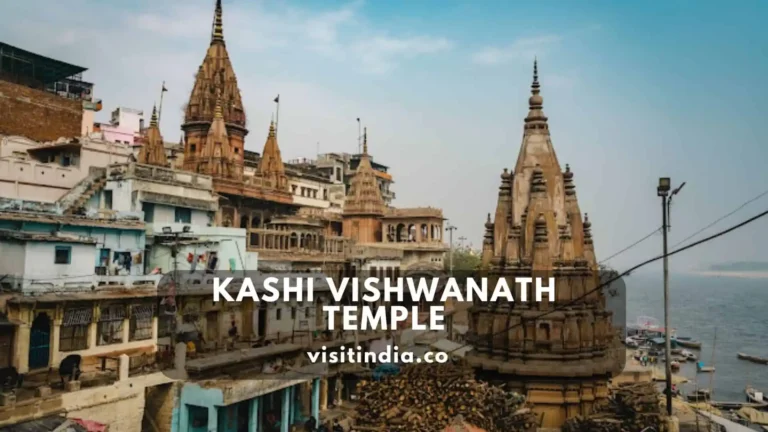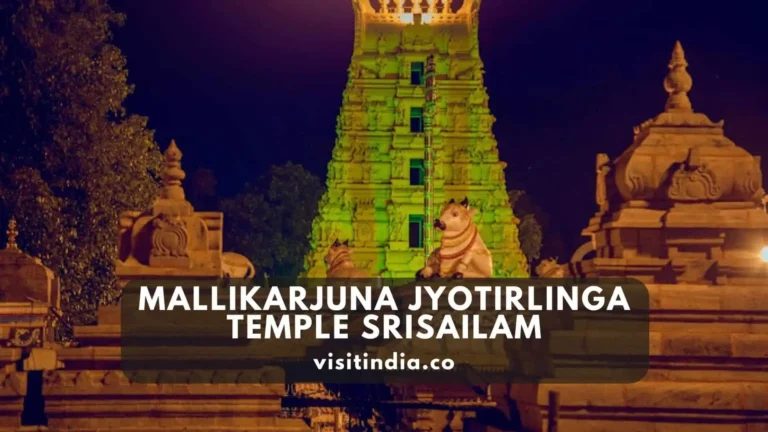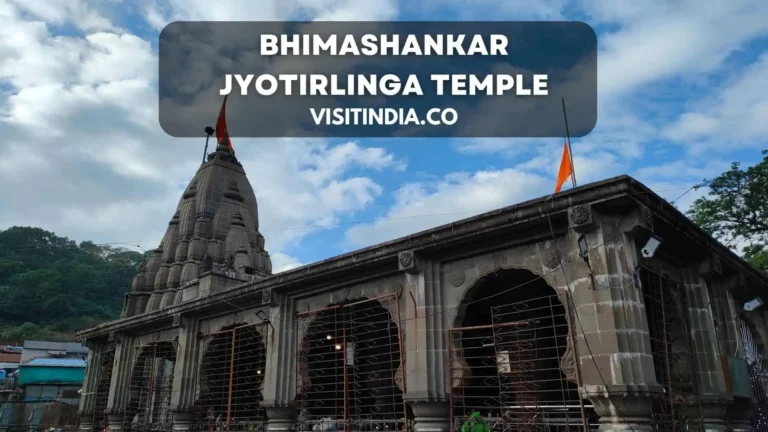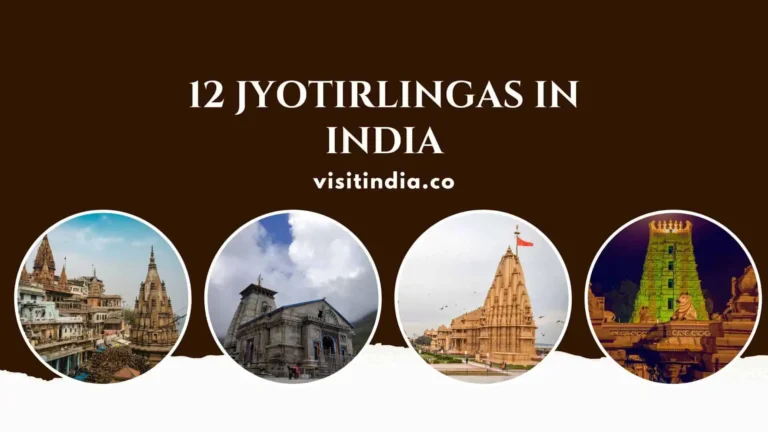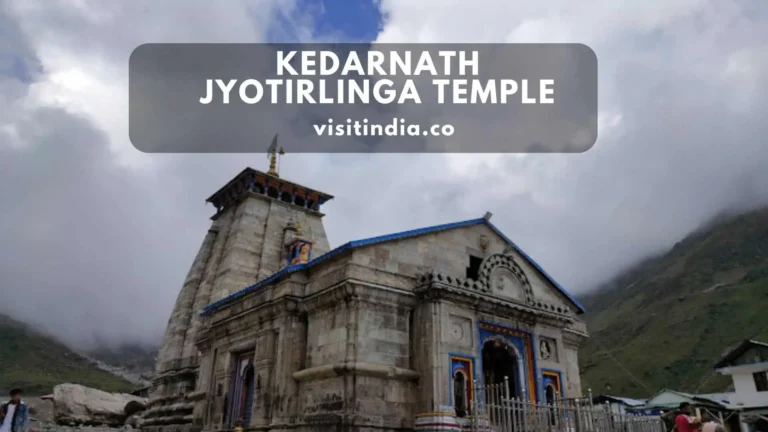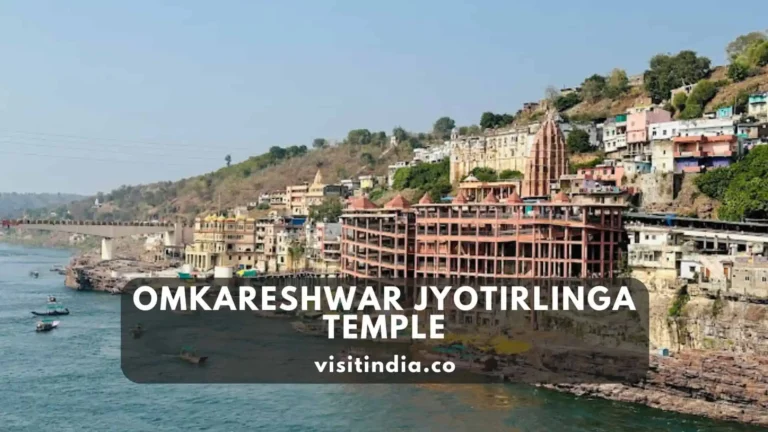Parli Vaijnath Jyotirlinga Temple Timings, How to Reach, Rituals and Festivals
The Parli Vaijnath Jyotirlinga Temple, located in the Beed district of Maharashtra, is a sacred pilgrimage site that holds immense significance for devotees of Lord Shiva. This temple is associated with the Vaidyanatha Jyotirlinga, one of the twelve Jyotirlingas mentioned in the Shiva Purana
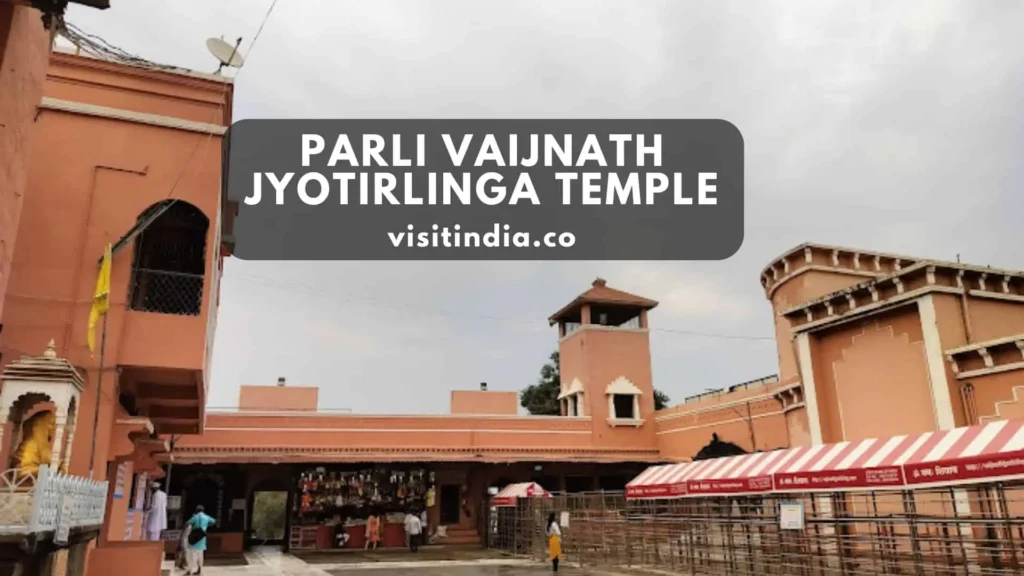
Situated near the banks of the rivers Brahma, Venu, and Saraswati, the Parli Vaijnath Temple offers a serene and spiritual ambiance for devotees to connect with the divine. The temple can be easily accessed from nearby cities like Ahmedpur, Nanded, and Aurangabad, making it a popular destination for pilgrims from all over the country.
With its rich historical and religious importance, the Parli Vaijnath Jyotirlinga Temple is not only a place of worship but also a hub of spiritual energy and devotion. Join me as we delve into the greatness of this sacred Parli Vaijnath Jyotirlinga Temple, exploring its legends, rituals, and the profound experience of meditating on the Vaidyanatha Jyotirlinga at Parli.
Consider reading: 12 Jyotirlingas in India Name, Location, Significance and Details
Parli Vaijnath Jyotirlinga Temple Timings
The Parli Vaijnath Jyotirlinga Temple holds great significance among the 12 Jyotirlinga temples of Lord Shiva in India. It is a place where devotees come to seek blessings and experience divine energy. To ensure a smooth and convenient visit, it is important to be aware of the temple timings. Here are the timings you need to know:
- Temple Opening Time: The temple opens its doors early at 5:00 AM.
- Temple Closing Time: The temple remains open for devotees until 10:00 PM.
- Aarti Timings: The temple conducts several Aarti ceremonies throughout the day. The specific timings may vary, so it is advisable to check with the temple authorities or the official website for accurate details.
- Pooja Timings: Various Pooja rituals are performed at the temple regularly. These timings also vary, and it’s recommended to verify them before planning your visit.
- Abhishekam Timings: Abhishekam, which involves pouring sanctified materials over the deity, is an important ritual at the temple. The timing for Abhishekam may differ, and it is best to verify the schedule in advance.
- Offerings Schedule: Devotees have the opportunity to make offerings at the temple. The offerings schedule may vary, so it is advisable to inquire about it before your visit.
Visiting the Parli Vaijnath Jyotirlinga Temple during the designated times ensures that you can participate in the various rituals and experiences offered. Take advantage of the serene atmosphere and immerse yourself in the spiritual energy of this sacred place.
Consider reading: Somnath Temple Timings, History, Nearest Railway Station and Airport
Significance of Parli Vaijnath Jyotirlinga Temple
Parli Vaijnath Temple holds immense significance and is revered by devotees for several reasons:
- One of the 12 Jyotirlingas: The temple is one of the 12 Jyotirlingas, which are considered the most sacred abodes of Lord Shiva in India. These Jyotirlingas are believed to radiate divine light and grant blessings to devotees.
- Spiritual importance: The temple is dedicated to Lord Shiva, who is considered the supreme deity in Hinduism. Devotees visit the temple to seek blessings, offer prayers, and express their devotion to Lord Shiva.
- Associated legends: The temple has a rich mythological history and is associated with several legends. One such legend narrates that Lord Vishnu performed penance at this site to attain the blessings of Lord Shiva. It is also believed that Lord Shiva himself established the Shivalinga in this temple.
- Ancient heritage: Parli Vaijnath Temple is an ancient temple, reflecting the architectural and cultural heritage of India. Its foundation dates back several centuries, making it a site of historical and cultural importance.
- Spiritual tourism: As part of the famous 12 Jyotirlinga pilgrimage, the temple attracts a large number of devotees and tourists from all around the world. It offers a unique spiritual experience to visitors, allowing them to immerse themselves in the divine atmosphere and connect with the divinity of Lord Shiva.
Parli Vaijnath Jyotirlinga Temple’s significance lies in its status as one of the 12 Jyotirlingas, its spiritual importance, its association with legends, its ancient heritage, and its popularity as a spiritual tourism destination. Devotees and visitors are drawn to the temple to seek blessings, experience the divine presence, and explore the rich cultural heritage of India.
History of Parli Vaijnath Jyotirlinga Temple
The Parli Vaijnath Jyotirlinga Temple, located in the famous Beed region of Maharashtra, has a rich and fascinating history that dates back thousands of years. This temple is one of the twelve Jyotirlingas, which are considered the most sacred abodes of Lord Shiva in India. Let’s explore the intriguing history of Parli Vaijnath Temple:
- Establishment and Rebuilding: The temple was originally established in the 1700s and later rebuilt in 1706 by Rani Ahilyabai Holkar, the queen of the Maratha Malwa Empire. It is believed that the temple is more than 2000 years old, making it a site of great historical significance.
- Legends and Mythology: The Parli Vaijnath Temple is associated with two popular legends. One legend recounts the story of the divine Amrit (nectar) and how it emerged during the churning of the ocean. It is believed that fourteen diamonds, including Dhanwantri (the god of medicine) and Amrit (the elixir of immortality), emerged from this process.
- Association with Demon King Ravana: The other legend relates to the demon king Ravana and his quest to own Lord Shiva. According to the tale, Ravana performed intense penance at the location where the temple now stands, seeking the blessings of Lord Shiva. This connection to Ravana adds to the temple’s historical significance.
The history of Parli Vaijnath Temple is intertwined with ancient legends, tales of divine emergence, and the rich mythology surrounding Lord Shiva. The temple’s association with the twelve Jyotirlingas further amplifies its importance as a revered spiritual site in India.
Consider reading: Ujjain Mahakal Mandir Darshan, Timing, Bhasma Aarti Online Booking Details
How to Reach Parli Vaijnath Jyotirlinga Temple
If you’re planning to visit the Parli Vaijnath Temple, it’s important to know the different transportation options available to reach this sacred destination. Here are the various ways you can reach the temple:
- By Road: Parli Vaijnath is well-connected by road, making it easily accessible by bus or taxi. You can hire a taxi from nearby cities or catch a bus from major bus stations. The distance from various cities to Parli Vaijnath by road is as follows:
- Hyderabad to Parli Vaijnath: Approximately 420 km
- Aurangabad to Parli Vaijnath: Approximately 240 km
- Pune to Parli Vaijnath: Approximately 373 km
- By Train: Parli Vaijnath has its own railway station, which is well-connected to major cities. You can board a train to Parli Vaijnath Railway Station (PRLI) from cities like Hyderabad, Secunderabad, and Manmad. The train journey takes around 7 to 9 hours, depending on the starting point.
- By Air: The nearest major airport to Parli Vaijnath is Aurangabad Airport (IXU), which is located approximately 240 km away. You can take a flight to Aurangabad from cities like Mumbai and Pune. From Aurangabad, you can continue your journey to Parli Vaijnath by road.
Festivals celebrated at Parli Vaijnath Jyotirlinga Temple
Parli Vaijnath Temple, known as one of the twelve Jyotirlingas in India, is not only a place of worship but also a center for celebrating various festivals throughout the year. These festivals hold great significance for devotees and attract a large number of visitors. Here are some of the major festivals celebrated at Parli Vaijnath Temple:
- Maha Shivaratri: Maha Shivaratri, meaning “the great night of Shiva,” is one of the most prominent festivals celebrated at Parli Vaijnath Temple. It is dedicated to Lord Shiva and is observed with great devotion and fervor. Devotees gather in large numbers to offer prayers, perform rituals, and seek blessings from Lord Shiva.
- Vaikunth Chaturdashi: Vaikunth Chaturdashi is celebrated on the fourteenth day of the waxing phase of the moon in the Hindu month of Margashirsha. It is believed that on this day, Lord Vishnu opens the doors of Vaikunth, his abode, for devotees to enter. Devotees visit Parli Vaijnath Temple to seek Lord Vishnu’s blessings and pray for prosperity and salvation.
- Tripuri Pournima: Tripuri Pournima is a festival celebrated on the full moon day in the month of Kartik. It commemorates the victory of Lord Shiva over the demon Tripurasura. Devotees visit the temple to offer prayers and seek blessings from Lord Shiva for prosperity, peace, and harmony in their lives.
- Vijayadashami: Vijayadashami, also known as Dussehra, marks the triumph of good over evil. It is celebrated with immense joy and enthusiasm at Parli Vaijnath Temple. The day is dedicated to Goddess Durga and weapons are worshipped as a symbol of victory. Devotees participate in grand processions and witness cultural performances.
- Chaitra Padva: Chaitra Padva, also known as Gudi Padwa, is the Hindu New Year celebrated in the month of Chaitra. It signifies the beginning of a new lunar year and marks the arrival of spring. Devotees visit the temple to seek blessings for a prosperous and auspicious year ahead.
Consider reading: Ayodhya Ram Mandir Inauguration, Pran Pratishtha Time, Rituals, Darshan and How to Watch
Rituals and Festivals at Parli Vaijnath Jyotirlinga Temple
At Parli Vaijnath Jyotirlinga temple, daily rituals and festivals are observed with great devotion. The temple priests perform various rituals, including the Abhishekam (holy bathing of the Lingam) and Aarti (devotional ritual with lamps), multiple times a day. Devotees actively participate in these rituals, showing deep reverence and spiritual dedication.
One of the most significant festivals celebrated at Parli Vaijnath temple is Maha Shivaratri. This festival is dedicated to Lord Shiva and attracts a large number of devotees. On this auspicious day, devotees fast and offer special prayers to Lord Shiva. The temple is filled with an atmosphere of devotion and spiritual energy during this grand celebration.
In addition to Maha Shivaratri, there are other important festivals celebrated at Parli Vaijnath temple, including Shravan Somvar, Shravan Shukravar, and Kartik Purnima. These festivals also witness a massive gathering of devotees who come to seek blessings and participate in the festivities.
The chanting of Rudra during the month of Shravan resonates throughout the village of Parli, adding to the spiritual ambiance. People from all walks of life come together to celebrate these festivals, fostering a sense of unity and devotion.
The rituals and festivals at Parli Vaijnath Jyotirlinga temple hold immense importance for the devotees. They provide an opportunity for spiritual growth, renewal, and a deep connection with the divine. These celebrations not only offer a chance to express devotion but also serve as a reminder of the rich cultural heritage and traditions associated with this ancient temple.
Religious Significance of Parli Vaijnath Jyotirlinga Temple
At Parli Vaijnath Jyotirlinga temple, the spiritual importance is unparalleled. As one of the twelve Jyotirlingas in India, the temple holds immense significance for devotees of Lord Shiva. The Jyotirlinga is believed to be a powerful manifestation of Lord Shiva, symbolizing his omnipresence. It is considered a sacred source of divine energy.
Visiting Parli Vaijnath temple is not only an act of seeking blessings but also an opportunity to embark on a spiritual journey. The serene ambiance of the temple, coupled with the presence of the Jyotirlinga, creates a deeply spiritual atmosphere that attracts pilgrims from all corners of the country.
Devotees come here to offer their prayers and offerings and connect with the divine. The temple is also an essential stop on the pilgrimage route of the twelve Jyotirlingas, known as the Dwadasha Jyotirlinga Yatra, which is a means of achieving spiritual enlightenment and divine grace.
- Parli Vaijnath Jyotirlinga temple is one of the twelve Jyotirlingas in India.
- The temple holds immense religious significance for devotees of Lord Shiva.
- The Jyotirlinga is believed to be a powerful manifestation of Lord Shiva.
- Visiting the temple is an opportunity to connect with the divine and embrace a spiritual journey.
- The temple is an essential stop on the pilgrimage route of the twelve Jyotirlingas.
Historical Significance of Parli Vaijnath Jyotirlinga Temple
The Parli Vaijnath Jyotirlinga temple holds immense historical significance in the religious and cultural landscape of India. This ancient temple, located in the Beed district of Maharashtra, has a rich history that spans centuries.
Here are some key facts about the historical significance of the Parli Vaijnath Jyotirlinga temple:
- The temple is one of the twelve Jyotirlingas in India, which are considered to be self-manifested and represent Lord Shiva in different forms.
- The origins of the temple can be traced back to ancient times, reflecting the deep roots of Hindu spirituality and devotion.
- The temple has been witness to various historical events and has played a crucial role in the religious and cultural history of the region.
- Renovations and contributions made by historical figures, such as Rani Ahilyabai, have added to the historical importance of the temple.
- The temple’s architecture, including the special Gwakshas windows that allow sunlight to directly fall on the Shiva Linga during specific hours, showcases the skilled craftsmanship of the past.
The historical significance of the Parli Vaijnath Jyotirlinga temple serves as a testament to its enduring spiritual legacy. By visiting this sacred site, devotees have the opportunity to connect with the ancient traditions and experience the timeless presence of Lord Shiva.
Summary:
The Parli Vaijnath Jyotirlinga temple in Maharashtra holds immense historical significance as one of the twelve sacred Jyotirlingas in India. Its rich history and architectural marvels make it a must-visit destination for devotees seeking a profound spiritual experience.
The Origin of the Parli Vaijnath Jyotirlinga Temple
The ancient Parli Vaijnath Jyotirlinga temple in Maharashtra has a captivating origin story steeped in Hindu mythology. According to the Shiva Purana, there was once a demon named Ravana who was a devout devotee of Lord Shiva.
Ravana performed intense penance to please Lord Shiva and was granted a divine boon. However, there was a condition attached to the boon – Ravana had to carry the Lingam (a sacred symbol of Lord Shiva) to his destination without placing it on the ground.
During his journey, Ravana encountered a Brahmin named Kukkutya who offered to hold the Lingam for him. Ravana accepted the offer but warned Kukkutya not to place the Lingam on the ground. However, Kukkutya couldn’t bear the weight for long and eventually had to place the Lingam on the ground, thus disobeying Ravana’s instructions.
As a result, the Lingam got firmly rooted in the ground, becoming the divine Vaijnath Jyotirlinga. This incident earned the temple its name, as “Parli” means “the place where the Lingam got rooted.”
This captivating legend adds to the spiritual allure of the Parli Vaijnath Jyotirlinga temple, attracting countless devotees from all over India and beyond. The temple’s significance lies not only in its association with this ancient legend but also in it being one of the twelve sacred Jyotirlingas in Hinduism. These Jyotirlingas are believed to be self-manifested representations of Lord Shiva, each possessing its unique spiritual energy.
The origin of the Vaijnath Jyotirlinga temple reflects the deep-rooted reverence and devotion that devotees have towards Lord Shiva. By visiting this sacred site, devotees can connect with the profound spirituality and experience the eternal presence of Lord Shiva.
Final Thoughts on Parli Vaijnath Jyotirlinga Temple
Visiting the Parli Vaijnath Jyotirlinga temple is a truly enriching experience that allows me to connect with the rich history, spirituality, and devotion of ancient Hindu traditions. This sacred site holds immense significance as one of the twelve Jyotirlingas in India, and its origins can be traced back to ancient times.
The temple’s architectural marvels, such as the unique Gwakshas windows that allow sunlight to directly fall on the Shiva Linga during specific hours, showcase the skilled craftsmanship of the past. The renovations and contributions made by historical figures, like Rani Ahilyabai, further enhance the temple’s historical importance.
As I step foot in this sacred place, I am reminded of the captivating origin story rooted in Hindu mythology. The legend of the temple’s Lingam getting firmly rooted in the ground after being carried by the demon Ravana and placed by a Brahmin named Kukkutya adds to its spiritual allure.
FAQs on Parli Vaijnath Jyotirlinga Temple
Which jyotirlinga is Parli Vaijnath?
Parli Vaijnath, situated in Maharashtra, India, is renowned as the Vaidyanath Jyotirlinga. It is one of the revered 12 Jyotirlingas scattered across India, holds a vital place in Hindu pilgrimage and is worshipped particularly on the festival of Mahashivratri. The temple’s ancient significance attracts devotees year-round.
What is the story of Parli Vaijnath temple?
Parli Vaijnath Temple’s story is steeped in mythology. The first legend describes the divine elixir, Amrit, influencing the site’s sanctity. In the second tale, demon King Ravana endeavored to gain Lord Shiva’s favor here. Historical accounts also highlight the renovation of the temple by Rani Ahilyabhai in the 1700s, marking its significance in both mythology and history.
Which is real Baidyanath Jyotirlinga?
The real Baidyanath Jyotirlinga is indeed located at the Baidyanath Dham temple in Deoghar, Jharkhand, India. Revered as an authentic representation of Lord Shiva, this sacred site is officially recognized as one of the twelve original Jyotirlingas, attracting millions of devotees annually.
What is the importance of Vaidyanath Jyotirlinga?
The significance of this sacred pilgrimage site lies in its association with Lord Shiva and its reputation as a place of healing and wellness. Devotees believe that offering prayers and seeking blessings at Vaidyanath Jyotirlinga can alleviate physical ailments and bring about overall well-being.
